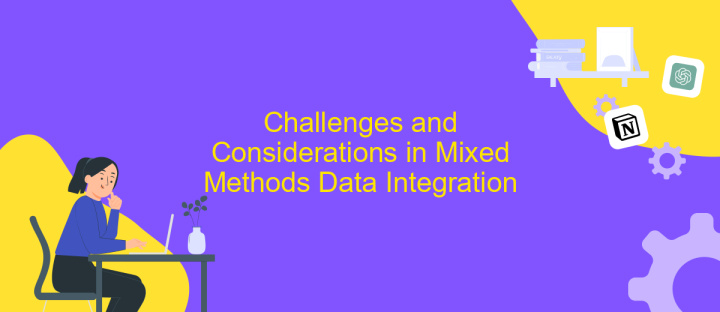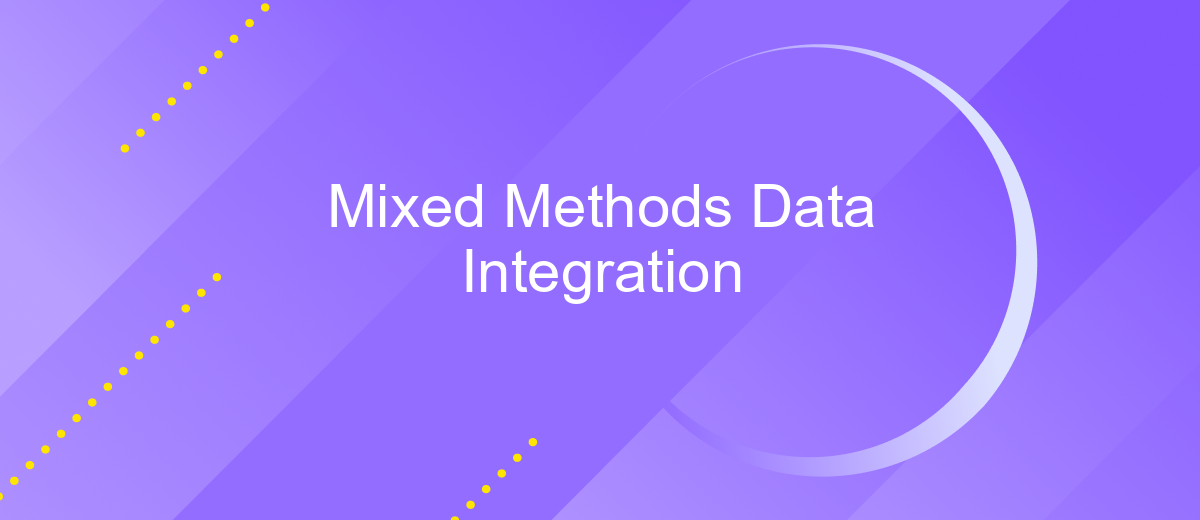Mixed Methods Data Integration
Mixed methods data integration combines qualitative and quantitative research approaches to provide a comprehensive understanding of complex phenomena. By leveraging the strengths of both methodologies, researchers can gain deeper insights and produce more robust findings. This article explores the principles, techniques, and benefits of mixed methods data integration, highlighting its significance in contemporary research across various disciplines.
Introduction
Mixed methods data integration is a research approach that combines both qualitative and quantitative data to provide a comprehensive understanding of a research problem. This method leverages the strengths of both data types, offering a more nuanced perspective than using either method alone. By integrating qualitative insights with quantitative measurements, researchers can achieve a more holistic view of their subject matter, addressing complex questions and enhancing the validity of their findings.
- Combines qualitative and quantitative data
- Offers a comprehensive understanding
- Enhances validity and reliability
- Addresses complex research questions
- Leverages strengths of both data types
The integration of mixed methods data is particularly useful in fields such as social sciences, healthcare, and education, where understanding human behavior and experiences is crucial. By employing this approach, researchers can not only quantify trends and patterns but also explore the underlying reasons and motivations behind them. This dual perspective is invaluable for developing effective interventions, policies, and practices that are both evidence-based and contextually relevant.
Mixed Methods Data Integration Approaches

Mixed methods data integration approaches combine qualitative and quantitative data to provide a comprehensive understanding of research questions. One common approach is the convergent design, where both types of data are collected simultaneously but analyzed separately. The results are then compared and combined to draw holistic conclusions. Another approach is the explanatory sequential design, which starts with quantitative data collection and analysis, followed by qualitative data to explain the initial findings in more depth.
Tools and services like ApiX-Drive can significantly streamline the integration process by automating data collection and synchronization. ApiX-Drive allows researchers to connect various data sources and automate workflows without requiring extensive coding knowledge. This service supports seamless integration of multiple data types, ensuring that both qualitative and quantitative data are readily available for analysis. By leveraging such tools, researchers can focus more on interpreting their data and less on the technical challenges of data integration.
Challenges and Considerations in Mixed Methods Data Integration

Integrating data from mixed methods research presents several challenges and considerations that researchers must navigate to ensure robust and meaningful results. The complexity arises from the need to reconcile qualitative and quantitative data, each with its own methodologies, strengths, and limitations.
- Data Compatibility: Ensuring that the qualitative and quantitative data can be effectively combined and compared.
- Methodological Rigor: Maintaining high standards of rigor across both qualitative and quantitative components.
- Interpretative Consistency: Achieving a coherent interpretation that respects the nuances of both data types.
- Resource Allocation: Balancing time, funding, and expertise to manage the demands of mixed methods research.
- Ethical Considerations: Addressing ethical issues related to data collection, integration, and reporting.
Researchers must be adept at blending different data forms while addressing these challenges to derive comprehensive insights. Careful planning, transparent reporting, and methodological flexibility are crucial for the successful integration of mixed methods data, ultimately enriching the research outcomes.
Advantages and Disadvantages of Mixed Methods Data Integration

Mixed methods data integration combines qualitative and quantitative research approaches, offering a comprehensive perspective on complex issues. This integration allows for the validation of results through cross-verification, enhancing the reliability and depth of the findings. By addressing both numerical data and human experiences, mixed methods provide a holistic view that neither approach could achieve alone.
However, mixed methods data integration also presents certain challenges. The process can be time-consuming and resource-intensive, requiring expertise in both qualitative and quantitative methodologies. Additionally, integrating diverse data sets can be complex, demanding advanced skills in data analysis and interpretation.
- Enhanced reliability through cross-verification
- Comprehensive perspective on complex issues
- Holistic view combining numerical data and human experiences
- Time-consuming and resource-intensive
- Requires expertise in multiple methodologies
- Complexity in integrating diverse data sets
Despite these disadvantages, the benefits of mixed methods data integration often outweigh the drawbacks. By leveraging the strengths of both qualitative and quantitative approaches, researchers can gain richer insights and produce more robust and actionable outcomes. This makes mixed methods an invaluable tool in addressing multifaceted research questions.


Conclusion
In conclusion, the integration of mixed methods data offers a robust approach to research, allowing for a comprehensive understanding of complex phenomena. By combining qualitative and quantitative data, researchers can gain deeper insights and validate findings through triangulation. This holistic approach not only enhances the credibility of the results but also provides a richer context for interpretation.
For researchers and organizations looking to streamline the process of data integration, tools like ApiX-Drive can be invaluable. ApiX-Drive simplifies the connection between various data sources, enabling seamless integration and efficient data management. By leveraging such services, the challenges associated with mixed methods data integration can be significantly reduced, leading to more effective and insightful research outcomes.
FAQ
What is Mixed Methods Data Integration?
Why is Mixed Methods Data Integration important?
What are the challenges of Mixed Methods Data Integration?
How can I automate the integration of mixed methods data?
What are some best practices for Mixed Methods Data Integration?
Strive to take your business to the next level, achieve your goals faster and more efficiently? Apix-Drive is your reliable assistant for these tasks. An online service and application connector will help you automate key business processes and get rid of the routine. You and your employees will free up time for important core tasks. Try Apix-Drive features for free to see the effectiveness of the online connector for yourself.

